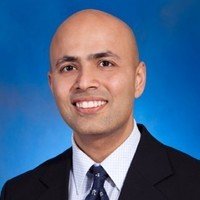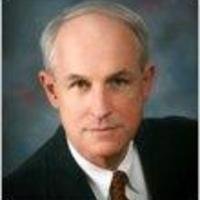Distinguished Lecturers
Past Lecturers
+
Climate Change and Insurance

Bio: Dr. Manghnani is a senior risk and analytics executive at the PIMCO with a focus on the Insurance Linked Security asset class. He is also the Chief Actuary and Chief Risk Officer at Newport Re. Most recently, he was the Head of Catastrophe Risk Management and Analytics COE at AIG. In this role, he was responsible for implementing state of the art science and analytics into AIG’s Property underwriting and catastrophe risk management strategy. Prior to that,Dr. Manghnani was at ACE USA, where he managed a portfolio of innovative weather/catastrophe insurance products and was responsible for catastrophe risk management for various Property and specialty businesses. Previously, Dr. Manghnani held the position of Climatologist and Trader at Weather Predict (a Renaissance Re subsidiary) and at Aquila Inc., where he was involved in weather derivatives trading and portfolio management. Vijay has been an Adjunct Professor of Civil Engineering at Clemson University. He holds a Ph.D. in Meteorology from North Carolina State University. He is a member of the American Meteorological Society and a Fellow of the Casualty Actuarial Society (FCAS). He has also served as the Chair of the North American Actuaries Climate Change Committee which is charged with quantifying the risk of climate change for the insurance industry.
+
Coding Capital: The Legal vs. The Digital Code

Date: February 11, 2019
Speaker: Katharina Pistor
Abstract: In my forthcoming book, “The Code of Capital: How Law Creates Wealth and Inequality”, I argue that capital is coded in law, or more specifically in core institutions of private law, including property, collateral, trust, corporate, bankruptcy as well as contract law. These “modules” of the code of capital bestow critical attributes on simple assets, such as objects or claims, and there by transform them from simple into a wealth generating assets. These attributes are priority, durability, convertibility and universality, and critically, they depend on effective state backing. Recently, law has met a potential competitor in the form of the digital code. Blockchain and similar technologies, in particular, makes it possible to encode commitments such that they will be executed irrespective of a change of heart, or circumstances. Decentralized verification of resources and rights instead of ex post vindication of legal title promises a world without courts and without coercive law enforcement. In short, “a new code” may be on the horizon and its relation to the legacy, or legal, code raises fundamental questions about how to organize economic relations in an uncertain world and about who gets to set the parameters for doing so.
Bio: Katharina Pistor is the Edwin B. Parker Professor of Comparative Law at Columbia Law School and director of the Law School’s Center on Global Legal Transformation. Her research and teaching spans corporate law, corporate governance, money and finance, property rights, comparative law and law and development. She has published widely in legal and interdisciplinary journals and is the author and co-author of several books. She is the recipient of the Max Planck Research Award (2012) and of several grants by, among others the Institute for New Economic Thinking, and the National Science Foundation. Her most recent book, “The Code of Capital: How the Law Creates Wealth and Inequality” is forthcoming at Princeton University Press.
+
Data Science in the Age of AI

Date: March 1, 2018
Speaker: Dr. Jim Guszcza
Abstract: Artificial Intelligence (AI) is one of the signature issues of our time, reshaping both business and societal landscapes. In financial services, companies commonly use AI and machine learning to underwrite risks, flag cases for suspected fraud, and identify new trading strategies. AI tools based on statistical learning, big data, and pattern recognition can perform a growing number of tasks that are difficult or impossible for humans. At the same time, they are poor at many aspects of cognition that come naturally to humans, such as formulating hypotheses, understanding cause and effect relationships, using commonsense reasoning, picking up on social cues and nonverbal forms of communication, and expressing empathy. Jim Guszcza shares the principles of human-computer collaboration, organizes them into a framework, and offers several real-life examples in which human-computer cognitive collaboration has been crucial to the economic success of a project.
Bio: Dr. Jim Guszcza is the US chief data scientist of Deloitte Consulting, and a member of Deloitte’s Advanced Analytics and Modeling practice. He has extensive experience applying predictive analytics techniques in a variety of public and private sector domains. He has also spearheaded Deloitte’s use of behavioral nudge tactics to more effectively act on model indications and prompt behavior change. Jim is a former professor at the University of Wisconsin-Madison business school, and he holds a PhD in the Philosophy of Science from The Universi- ty of Chicago. Jim is also a Fellow of the Casualty Actuarial Society and on its board of directors.
+
Dominant Factor Analysis by Nonlinear Polymodels

Date: October 9, 2017
Speaker: Dr. Raphael Douady
Abstract: Dominant Factor Analysis
Nonlinear polymodels is a factor-based statistical analysis technique, which can be applied, in a broad range of fields. Inspired by pattern recognition methods used in DNA analysis or in hand writing recognition, it is particularly adapted to situations where space-dependent changes of regime modify the relation between dependent variables and their independent drivers, making it difficult for a single multi-factor model to fit all the possible situations that may potentially occur. We shall present in the particular context of financial modeling.
Traditional multi-factor analysis is essentially used in finance in a linear setting. Asset returns are replicated by a linear combination of factor returns. Not only it provides answers to questions related to the statistical behavior of assets with respect to the market, but it is intellectually comfortable, as a portfolio is naturally represented as a reduced "portfolio" of risk factors. However, this representation sadly lacks of any predictive value, especially when we need itthe most, that is, when a crisis is coming. We shall show how nonlinear polymodels provide a reliable solution to the main questions factor analysis aims at addressing:
1) finding the probability distribution of individual asset returns (risk measurement)
2) assessing the impact of a given shift of risk factors (stress testing)
3) estimating the joint probability distribution of family of assets (portfolio risk and optimization)
We shall show how the nonlinear polymodel-based "Dominant Factors™" methodology provides superior portfolio returns, simply thanks to a better control of the downside dynamics, without the procyclicality pitfalls of traditional Markowitz and Black-Litterman methods.
Bio: Raphael Douady is a French mathematician and economist specializing in financial mathematics and chaos theory. He holds the Frey Family endowed chair of quantitative finance at Stony Brook University (SUNY), and is also the international representative (and former academic director) of the Laboratory of Excellence on Financial Regulation (Labex ReFi, a joint initiative of University of Paris 1-Sorbonne, ESCP-Europe, CNAM and ENA) and affiliated with the French National Centre for Scientific Research (CNRS). He co-founded fin-tech firms Riskdata (1999) and Datacore (2015). He has more than twenty years of experience in the banking industry (risk management, option models, trading strategies) and thirty-five years of research in pure and applied mathematics. His work in mathematical finance has focused on extreme risk, for which he developed the theory of polymodels, and on systemic risk and the anticipation of market instabilities and crises. He also authored a seminal article on infinite dimensional interest rate models, and a rating-based credit derivatives model that introduced the notion of “rating surface”. His background in pure mathematics is in dynamical systems, chaos theory and symplectic geometry. He studied at Ecole Normale Supérieure in Paris and earned his PhD in mathematics in 1982 from the University of Paris 7.
+
Rough Volatility: An overview

Date: April 11, 2017
Speaker: Jim Gatheral
Abstract: The scaling properties of historical volatility time series, which now appear to be universal, motivate the modeling of volatility as the exponential of fractional Brownian motion. This model can be understood as reflecting the high endogeneity of liquid markets and the long memory of order flow. The Rough Bergomi model which is the simplest corresponding model under Q fits the implied volatility surface remarkably well. As an application, we show how to forecast the variance swap curve. We also present a quasi-explicit expression for the characteristic function of a natural fractional generalization of the Heston model, a model which also fits the volatility surface very well, in contrast to the classical Heston model. Finally, we comment on the calibration of rough volatility models, which is still work in progress.
Bio: Jim Gatheral is researcher in the field of mathematical finance, who has contributed to the study of volatility as applied to the pricing and risk management of derivatives. A recurrent subject in his books and papers is the volatility smile, and he published in 2006 a book The Volatility Surface based on a course he taught for six years at New York University, along with Nassim Taleb. More recently his work has moved in the direction of market superstructure, especially as applied to algorithmic trading. He is the author of The Volatility Surface: A Practitioner's Guide. (2006, New Jersey: Wiley)
In March 2010, Jim Gatheral left his position at Merrill Lynch to assume a tenured full professor position at the Financial Engineering Masters Program at Baruch College where he is teaching volatility surface modeling and market microstructure. In April 2013, Jim was named Presidential Professor at Baruch College. Prior to this, he worked at Bank of America and Bankers Trust before heading the Equity Quantitative Analytics group at Merrill Lynch in 1996, where he was a managing director for 17 years. In 1998 he became a fellow of the Masters Program in Mathematical Finance at the Courant Institute of Mathematical Sciences at New York University, where he was an adjunct professor for 12 years.
Dr. Gatheral received his PhD in theoretical physics from Cambridge University (1983), and a B.Sc. in Mathematics and Natural Philosophy from the University of Glasgow.
+
Pricing Climate Change

Date: April 19, 2016
Speaker: Bob Litterman
Abstract: Pricing greenhouse gas emissions is a risk management problem involving making trade-offs between consumption today and unknown and potentially catastrophic damages in the (distant) future. The optimal price is necessarily based on society’s willingness to substitute consumption across time and across uncertain states of nature. A large body of work in macroeconomics and finance attempts to infer societal preferences using the observed behavior of asset prices, concluding that the standard preference specifications are inconsistent with observed asset valuations. This literature has developed a richer set of preferences that are more consistent with asset price behavior. We will explore the implications of these richer preference specifications for the optimal pricing of carbon emissions.
Bio: Bob Litterman is a founding partner of Kepos Capital. He also enjoyed a 23-year career at Goldman Sachs. He is the co-developer of the Black-Litterman Global Asset Allocation Model, a key tool in investment management, and has co-authored many books. Bob earned a Ph.D. in Economics from the University of Minnesota. He has been the recipient of many honors: Risk Manager of the Year by the Global Association of Risk Professionals. Inaugural recipient of the S. Donald Sussman Fellowship at MIT's Sloan School of Management, CFA Institute's Nicholas Molodovsky Award and the the International Association of Quantitative Finance/SunGard Financial Engineer of the Year Award. Bob serves on a number of boards, including Commonfund, Options Clearing Corporation, Resources for the Future, Robert Wood Johnson Foundation, the Sloan Foundation and World Wildlife Fund.
+
Trading & Markets: What You Should Know

Date: October 9, 2015
Speaker: Mee Warren
Bio: Ms. Mee Warren, SVP, Two Sigma Investments, LLC/Head of US/PA Equities; Trader. Her primary responsibilities include making investment decisions, driving strategic business initiatives, and helping to improve overall performance. Since joining Two Sigma in 2003, she has held several roles in the firm, but most recently she was the Head Trader of US & Pan-Am Equities. In addition to her primary regions, she traded equities, futures/commodities, bonds, currencies, and derivatives for Europe and Asia.
Mee received a B.S. in Finance, International Business, and Insurance/Risk Management from the University of Minnesota's Carlson School of Management with minors in Latin, Chinese, and East Asian Studies in 2001. She also graduated UMTYMP in 1996.
Mee was recently presented with the “Women in Finance Outstanding Contribution” award from Markets Media for her leadership and contribution across the financial community.
+
Stochastic modeling and optimization methods in Investments

Date: April 30, 2015
Speaker: Dr. Thaleia Zariphopoulou
Abstract: Optimal portfolio construction is one of the fundamental problems in both Financial Mathematics and the Finance Industry. Despite its importance, however, there are many limitations in the existing investment models as well as a serious disconnection between academic research and investment practice. In this talk, I will discuss these issues and will also present a new theory aiming at bridging the normative and descriptive approaches in portfolio choice.
Bio: Thaleia Zariphopoulou is the holder of the Chair of Mathematics and the V.H. Neuhaus Professorship of Finance at The University of Texas at Austin. Previously, she was the Laun Professor at the University of Wisconsin, Madison and from 2009-2012 the first holder of the Oxford-Man Chair in Quantitative Finance at the University of Oxford. Her area of expertise is Financial Mathematics and Stochastic Optimization. She has published extensively in the areas of portfolio choice and pricing in incomplete markets. In 2012, she was elected a SIAM Fellow. In 2010, she delivered the 5th Ladyzhenskaya Lecture and in 2014, she was an invited speaker at the International Congress of Mathematicians in Seoul. She has served very actively in the community of Financial Mathematics. She sits on the editorial board of eight academic journals and has served in various prize committees. She has also been the Vice-Chair (2007-2010) of the SIAG Activity Group in Financial Mathematics and Engineering, and has served as Vice-President (2004-2006) and President (2006-2008) of the Bachelier Finance Society.
+
Valuing Interest Rate Derivatives in Low Interest Rate Environments

Date: Wednesday, November 5, 2014
Speaker: John Hull
Abstract: The presentation will discuss recent research carried out by John Hull (with Alan White) concerned with the modeling of interest rates. It will describe how best-fit volatility functions can be implied from market data, the implementation of OIS discounting, and the determination of a real-world process for interest rates.
Bio: John Hull is the Maple Financial Professor of Derivatives and Risk Management at the Joseph L. Rotman School of Management, University of Toronto. His research has an applied focus and is concerned with risk management, bank regulation, and valuation of derivatives. He is best known for his books Risk Management and Financial Institutions (4th edition will be out shortly), Options, Futures, and Other Derivatives (now in its 9th edition), and Fundamentals of Futures and Options Markets (now in its 8th edition). His books have been translated into many languages and are widely used in trading rooms throughout the world, as well as in the classroom.
+
Healthcare Reform: Actuarial Problems and Solutions

Date: April 24, 2014
Speaker: Hans Leida
Abstract: In 2014, the most disruptive or transformative, depending on your point of view, provisions of the Affordable Care Act (ACA) take effect. This has plunged the U.S. healthcare system, which makes up roughly 1/6 of our economy, into a turbulent transitional period. Why is healthcare so expensive? How have actuaries modeled health insurance risks in the past, and what new techniques are needed as insured populations reshuffle in response to exchanges, subsidies, and mandates? This lecture will answer some of these questions, starting with an overview of pre-ACA healthcare markets and spending in the U.S. I will also give an overview of how the various pieces of the ACA are supposed to work from an actuarial perspective, with some comments on how things are playing out in Minnesota. Finally, I'll discuss recent initiatives in the health actuarial community to develop new tools using ideas from complexity theory, agent-based modeling, and other predictive models.
Bio: Dr. Hans Leida PhD, FSA, MAAA is a principal and consulting actuary with the Minneapolis office of Milliman. He joined the firm in 2006. Hans works in the health insurance area. He has consulted to insurance companies, Blue Cross Blue Shield plans, HMOs, government health programs, and employers. Recently, he has been working on individual and small group health insurance rate filings under the Affordable Care Act's healthcare reforms.In 2007, he co-authored a paper for America's Health Insurance Plans (AHIP) on the impact of guaranteed issue and community rating laws adopted by certain states in the 1990s. That paper has been widely cited with the advent of federal healthcare reform, including in amicus briefs presented to the U.S. Supreme Court. Hans also has significant experience with risk adjustment and predictive modeling of healthcare costs. He was the lead developer of the prescription-drug-based risk adjuster included in the Milliman Advanced Risk Adjusters (MARA) software product. He has also performed firm-level research on the new federal ACA risk adjustment model that will take effect in 2014. He got his PhD in Mathematics from the University of Wisconsin, and was the recipient of a University of Wisconsin Graduate Research Award, a National Science Foundation VIGRE Fellowship, and a National Science Foundation Graduate Research Fellowship.
+
Systemic Risk

Date: February 21, 2014
Speaker: George C. Papanicolaou
Abstract: Modern financial mathematics evolved in the past decades out of the need to manage risk with financial instruments like derivative contracts. After a brief historical review of how this subject started and has evolved I will discuss current issues in the quantification and management of risk in financial markets. Until recently, risk assessment models did not consider seriously the effects of inter-connectedness of financial agents and markets, and the way risk diversification impacts the overall stability of markets. I will discuss this issue and more generally how the stability of markets is affected by different patterns of trading.
Bio: George C. Papanicolaou is currently the Robert Grimmett Professor in Mathematics at Stanford University. Besides his former focus on the analysis of waves and diffusion in inhomogeneous or random media, his recent research interests also include financial mathematics, especially the use of asymptotics for stochastic equations in analyzing complex models of financial markets and in data analysis. In 1987, the University of Athens conferred an Honorary Doctor of Science on Papanicolaou. In 2000, he became a Fellow of the American Academy of Arts and Sciences and he was elected to the U.S. National Academy of Sciences. Papanicolaou was invited plenary speaker at multiple international congresses, among others at the SIAM 50th anniversary meeting in 2002 and at the International Congress of Industrial and Applied Mathematics in 2003. In 2006, he received the SIAM von Neumann Prize in recognition of his wide-ranging work on analytic and stochastic methods and their application to the modeling of phenomena in the physical, geophysical, and financial sciences. In 2010 he received the William Benter Prize in Applied Mathematics. In 2011 he was the Gibbs lecturer of the American Mathematical Society. The University of Paris Diderot conferred on him the degree Doctor Honoris Causa in 2011.
+
High Frequency Trading: New Challenges for Mathematicians

Date: December 6, 2013
Speaker: Rene Carmona
Abstract: An introductory discussion of high frequency market data and the intra-day dynamics of limit order books will occupy the first part of the talk. The technical part of the talk will be concerned with the derivation of a new form of self-financing condition consistent with some basic properties of high frequency data. In this study, we first identify properties of the dynamics of limit order books at odds with the standard self-financing conditions of continuous time finance models, including models allowing for frictions such as proportional transaction costs and special forms of price impact. Then we include statistically significant properties of the data, in a set of simple equations written in transaction time. Finally, we derive new self-financing conditions through a standard diffusion limit argument. Among the desirable properties of these conditions is the fact that they depend upon whether trading is through limit or market orders.
Bio: Rene Carmona, Ph.D., is the Paul M. Wythes ’55 Professor of Engineering and Finance at Princeton University in the department of Operations Research and Financial Engineering. He is an associate member of the Department of Mathematics, a member of the Program in Applied and Computational Mathematics, and Director of Graduate Studies of the Bendheim Center for Finance where he oversees the Master in Finance program.
Dr. Carmona's publications include over one hundred articles and seven books in probability, statistics and financial mathematics. He was elected Fellow of the Institute of Mathematical Statistics in 1984 and of the Society for Industrial and Applied Mathematics in 2009. He is the founding chair of the SIAM Activity Group on Financial Mathematics and Engineering, the founding editor of the Electronic Journal & Communications in Probability, and the SIAM Journal on Financial Mathematics. He is on the editorial board of several peer-reviewed journals and book series and on the scientific board of several institutes (e.g. Oxford Man Institute, Institute of Mathematics and Applications) Dr. Carmona developed computer programs for teaching and research. He has worked on the commodity and energy markets, and he is recognized worldwide as a leading researcher and consultant in this area. Recently, he organized conferences and summer schools on Energy Risk, the Future of the Electricity Markets, Emissions Regulations, and high frequency trading, topics on which he designed and taught courses and tutorials.
+
Actuarial Education Past, Present, and Future

Date: April 8, 2013
Speaker: Ian Duncan
Abstract: Historically, actuarial education has been exam oriented, operated on an apprenticeship model. In recent years university education has become a greater component of the preparation of actuaries and with developments such as the US Centers of (University) Actuarial Excellence and Canadian University Accreditation Program, the university model is becoming dominant. Is this a good thing for the profession? What do tomorrow's actuaries need to know, and how will they acquire the knowledge and training that they need to compete as risk management and financial professionals? What is the most useful balance between on-the-job training and theoretical education, and how can universities provide meaningful education for mid-career practitioners? At the same time, the profession is encouraging a model of university-based research that is divorced from the vast majority of practitioners. How can we make research a greater part of the training of future actuaries and encourage meaningful links between industry and universities?
I don't have answers to these questions but I believe that it is critical for those of use involved in the actuarial profession as educators, students and practitioners to seek an answer. I look forward to a lively discussion.
Bio: Mr. Duncan is Vice President, Outcomes and Analytics for the Walgreen Cos. in Deerfield, IL. responsible for all the company's clinical research and publications. He was formerly president and founder of Solucia Consulting, a SCIOinspire company, a provider of analytical and consulting services to the healthcare financing industry.
Mr. Duncan holds a post-graduate degree in economics from Balliol College, Oxford, and is a fellow of the Society of Actuaries, the Institute of Actuaries (London) and the Canadian Institute of Actuaries. He is active in public policy and healthcare reform, and serves on the boards of directors of the Commonwealth of Massachusetts Healthcare Connector Authority and SynCare, LLC. Academically, he is a Senior Scholar of the Dept. of Health Policy of the Thomas Jefferson Medical College, an Adjunct Research Professor of the School of Healthcare Administration at Georgetown University, and Visiting Professor of Actuarial Mathematics in the Dept. of Probability and Applied Statistics at the University of California, Santa Barbara. He is the author of a number of peer-reviewed papers, (two of which have won best-paper awards from the Disease Management Association of America) and a number of books. His books include "Managing and Evaluating Healthcare Intervention Programs" (Actex Publishers, 2008) and "Healthcare Predictive Modeling and Risk Adjustment" (April 2011).
+
Extended Local Volatility Modeling

Date: March 29, 2013
Speaker: Steve Shreve
Abstract: Given a multi-dimensional Ito process whose drift and diffusion terms are adapted processes, we construct a weak solution to a stochastic differential equation that matches the distribution of the Ito process at each fixed time. Moreover, we show how to match the distributions at each fixed time of functionals of the Ito process, including the running maximum and running average of one of the components of the process. A consequence of this result is that a wide variety of exotic derivative securities have the same prices when the underlying asset price is modeled by the original Ito process or the mimicking process that solves the stochastic differential equation. This is joint work with Gerard Brunick.
Bio: Professor Shreve works in the general area of stochastic processes with applications to financial markets and heavy-traffic limits of queueing systems. He is the co-author with I. Karatzas of the graduate text "Brownian Motion and Stochastic Calculus," Springer-Verlag, 1991. His is also the author of the two-volume work "Stochastic Calculus for Finance," Springer-Verlag, 2004. He directs the B.S. program in Computational Finance at Carnegie Mellon and serves on the Steering Committee for the Master's program in Computational Finance.
+
Applied Actuarial Research Projects at the Goldenson Center for Actuarial Research, University of Connecticut
Date: November 1, 2012
Speaker: Jay Vadiveloo
Abstract: The talk will go through a brief history of the evolution of the Goldenson Center at UConn, the unique dual position held by the Director of the Center and some of the positives and negatives of this arrangement. The talk will then describe the applied research philosophy of the Goldenson Center and focus on 3 major initiatives being undertaken by the Goldenson Center in partnership with Towers Watson: 1. The Replicated Stratified Sampling modelling algorithm which was awarded two US patents in March 2012 2. The National Retirement Satisfaction Index (NRSI) which captures both financial and non-financial factors impacting retirement readiness. The NRSI will be updated annually and will be jointly branded by Towers Watson and the Goldenson Center. 3. ERM for Small Businesses initiative which has received tremendous publicity and has led to a request for a text on this topic The talk will conclude with an open Q&A discussion.
Bio: Jay Vadiveloo is a Senior Consulting Actuary in the Towers Watson Risk & Financial Services practice in Hartford, CT, and is also Professor and Director of the recently endowed Janet & Mark L. Goldenson Center for Actuarial Research at the University of Connecticut.
As Director of the Goldenson Center, Jay has channeled his actuarial expertise and 25 years of experience with the life insurance industry to initiate an exciting and innovative initiative focused on Enterprise Risk Management for Small Businesses, where graduate students in actuarial science are funded by the Center to conduct ERM projects for small businesses in the region.
Jay has a doctorate in statistics from the University of California, Berkeley, is a Fellow of the Society of Actuaries (FSA), a Member of the American Academy of Actuaries (MAAA), and a Chartered Financial Analyst (CFA). Jay has over 25 years of experience with the life insurance industry which includes senior level appointments at Connecticut Mutual, Mass Mutual, Aetna Financial Services, ING, Deloitte Consulting, Watson Wyatt and currently, Towers Watson. Jay has published several articles in the actuarial literature, is a frequent speaker at actuarial conferences and seminars, and has managed several major mortality and morbidity experience studies projects for the Society of Actuaries. One of Jay's important contributions to the financial services industry in general is a new algorithm for risk modeling (patent pending) that he invented which exponentially reduces processing time at a pre-determined accuracy level for any complex actuarial modeling.
+
Risk, Return, and Ross Recovery

Date: October 19, 2012
Speaker: Peter Carr
Abstract: The risk return relation is a staple of modern finance. When risk is measured by volatility, it is well known that option prices convey risk. In a parametric Markovian setting, risk-neutral transition probabilities can also be determined from option prices. Recently, Ross has shown that real-world transition probabilities of a Markovian state variable can be recovered from its risk-neutral transition probabilities along with a restriction on preferences. In this paper, we show how to recover real-world transition probabilities in a diffusion context in a preference-free manner. Our approach is instead based on restricting the form and dynamics of the numeraire portfolio. (Joint work with Jiming Yu.)
Bio: Dr. Peter Carr is a Managing Director at Morgan Stanley with 15 years of experience in the derivatives industry. He was also a finance professor for 8 years at Cornell University, after obtaining his PhD from UCLA in 1989. He is presently the Executive Director of the Math Finance program at NYU's Courant Institute, the Treasurer of the Bachelier Finance Society, and a trustee for the Museum of Mathematics in New York. He has over 70 publications in academic and industry-oriented journals and serves as an associate editor for 8 journals related to mathematical finance. He was selected as Quant of the Year by Risk Magazine in 2003 and shared in the ISA Medal for Science in 2008. The International Association of Financial Engineers (IAFE) and Sungard selected Dr. Carr as its 2010 Financial Engineer of the Year.
+
Divided By a Common Language: Communicating Applied Research in Actuarial Science

Date: October 13, 2011
Speaker: Mary Hardy
Abstract: Dr. Hardy who will be doing a week long MCFAM residency with the department.
Many actuarial researchers work in applied areas, and their work could provide useful insight to practitioners, but the message is not always received on the practitioner side. There is frustration on both sides; practitioners may complain that academics are out of touch; academics complain that practitioners are not sufficiently receptive to their ideas or supportive of academic-style research.
In this talk Dr. Hardy will give some examples of more successful and less successful communications from my own research experience in actuarial risk management, including risk measures and maturity guarantees, embedded guarantees in pension plans, and guaranteed minimum income benefits (GMIBs).
Dr. Hardy will draw some conclusions, and address the actions that could be taken on both sides of the academic/practitioner divide in actuarial science.
Bio: Dr. Mary Hardy holds the CIBC Chair in Financial Risk Management at the University of Waterloo. She is a Fellow of the UK Institute of Actuaries, a Fellow of the Society of Actuaries, and a Chartered Enterprise Risk Analyst. Her research in risk management for equity linked insurance, including the use of the conditional tail expectation risk measure, has been influential in the development of capital standards in Canada and the US. She is currently researching design and risk management solutions for pension plans.
Dr. Hardy has authored around 40 papers and two books in applied risk management for life insurance and pensions. Her most recent book, .Actuarial Mathematics for Life Contingent Risk. which she co-wrote with Howard Waters and David Dickson, is a modern take on life contingencies for life insurance and pensions risk.
+
Quantitative Hedge-Funds and Strategies: Myths and Realities

Date: March 30, 2011
Speaker: Marco Avellaneda
Abstract: Quantitative strategies which, at certain points in recent history, have generated positive returns for investors are reviewed. These are: (1) statistical arbitrage, (2) long volatility/variance,(3) commodities yield-curve trading and (4) ETF arbitrage and high-frequency trading. The profitability of these quantitative strategies will be analyzed across the economic cycle. The conclusion is that, aside from (3), "quant" strategies are appropriate when markets are volatile and "trend-less". In contrast, commodity yield-curve strategies work well in trending markets, particularly when trending to the upside. Following this, the broader question of profitability of hedge-funds is addressed. Some myths and realities associated with them are discussed, and, in particular, empirical findings which predict the overall size of the hedge-fund industry compared with all investments.
Bio: Dr. Marco Avellaneda is a Professor of Mathematics at the Courant Institute of Mathematical Sciences at New York University. Since 1998 he has been the director of the Division of Financial Mathematics. His research interests include probability, partial differential equations, applied mathematics, quantitative modeling in finance, homogenization, and turbulence theory. He wrote "Quantitative Modeling of Derivative Securities: From Theory to Practice," and Risk Magazine named him their 2010 Quant of the Year.